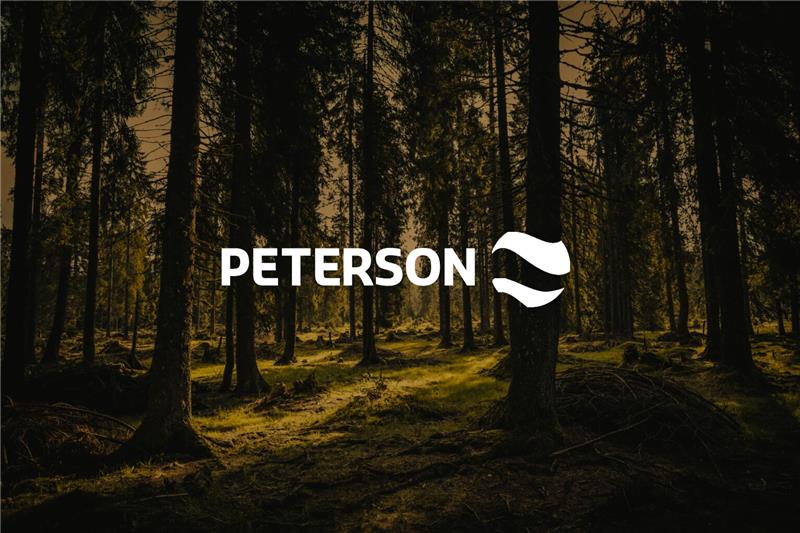
By a Peterson Solutions EUDR Specialist
When the European Union Deforestation Regulation (EUDR) was first introduced, it sent ripples across global supply chains. For many, the announcement raised urgent questions: Can we prove that our sourcing isn’t linked to deforestation? Will our systems support the required traceability? What if our suppliers can’t deliver the data we need?
These weren’t just operational concerns—they were existential questions about transparency, sustainability, and the future of global trade.
At Peterson Solutions, we’ve walked alongside dozens of companies during this transition. And here’s what we’ve learned: navigating EUDR doesn’t start with technology. It starts with trust, leadership, and a willingness to adapt.
Chapter 1: The Challenge Beneath the Forest Canopy
Over the past two decades, data has evolved from a technical tool to a strategic compass. In the world of environmental compliance, this transformation is especially clear. Monitoring landscapes is no longer a manual or periodic task—it’s continuous, real-time, and highly granular.
And now, under EUDR, the pressure to deliver plot-level geolocation, prove deforestation-free sourcing, and store evidence for five years has elevated the stakes even higher.
But here’s the truth few want to say out loud: most supply chains aren’t ready.
The real challenge isn’t just collecting the data it’s:
- Making sure it’s accurate and interoperable
- Ensuring it’s legally shareable and ethically obtained
- And being able to act on it when the regulator comes knocking
That’s where the story begins to shift.
Looking to assess your current EUDR readiness?
Start with a free consultation from our compliance team at Peterson Solutions. Contact Us
Chapter 2: The Invisible Weight of Unstructured Data
Take geolocation data, for example. Many suppliers already have GPS coordinates—but the formatting varies. Some use decimals, some degrees. Some maps are generated by consultants, others pulled from smartphones. Some data is stored in PDF scans, others in proprietary platforms.
Now imagine trying to unify all of that for hundreds of farms across multiple countries.
That’s why data interoperability and standardization are no longer “nice-to-haves.” They are the bedrock of compliance. Peterson works with the Nature Data Protocol to make sure our clients’ datasets are:
- Uniform
- Secure
- And ready to plug into EUDR reporting systems
Our traceability platform automatically validates geolocation formats and links every polygon to supplier metadata, transaction history, and sustainability claims. It’s the kind of traceability auditors dream of—and clients now need.
Chapter 3: Earning Trust in Every Link of the Chain
Beyond the technical, lies the human. EUDR demands not just where products come from, but how the data was sourced.
Was consent obtained from smallholders?
Were indigenous lands respected?
Can the information be shared without breaching privacy?
This is especially crucial in countries where land rights are complex or undocumented. At Peterson, we advocate for ethical data sharing. We help clients develop governance policies that:
- Secure informed consent
- Respect local communities
- And build trust with suppliers, not just compliance
Because when trust exists, data flows better. And when data flows, EUDR compliance becomes a strength, not a strain.
Chapter 4: Seeing the Unseen with Satellite Eyes
With geolocation data in place, the next step is proving land use history. Under EUDR, companies must show that sourcing areas weren’t deforested after the December 31, 2020 cut-off date.
This is where traditional audits fall short—and where high-resolution satellite imagery and AI step in.
At Peterson, we provide:
- Near-daily satellite coverage
- AI-driven deforestation detection
- Polygon-level alerts for land change risks
This doesn’t just satisfy regulators, it empowers companies to monitor supply chains in near real-time, identify vulnerabilities, and prevent violations before they occur.
Want to map your supply chain’s deforestation exposure?
Book a demo of our Satellite Monitoring Tool today. Get in touch
Chapter 5: Building a System that Outlives Deadlines
Preparing for EUDR isn’t about passing one audit, it’s about building a compliance culture that endures.
That means establishing internal systems that support:
- Robust data governance frameworks
- Efficient data flow management
- Regular risk assessments
- Supplier engagement and training
- Blockchain-secured traceability records
Peterson’s EUDR platform is designed to be that foundation. Whether you’re a trader, processor, or brand, we help embed compliance into your workflows—seamlessly.
And because we know that EUDR is only one piece of the broader sustainability puzzle, our tools are future-proofed to support upcoming regulations and voluntary standards.
Final Chapter: From Reactive to Resilient
For many companies, the journey toward EUDR compliance feels reactive—filled with deadlines, pressure, and uncertainty.
But with the right partner, that journey can become one of resilience, transparency, and competitive advantage.
At Peterson Solutions, we don’t just help you check regulatory boxes—we help you build systems that create real impact. We bring together technology, people, and purpose to ensure your supply chain meets the standards of tomorrow—today.
Ready to turn EUDR compliance into a strategic advantage?
Let’s build your traceability system together.
Contact us at ptech.commercial@onepeterson.com
Visit our EUDR Solutions Page
